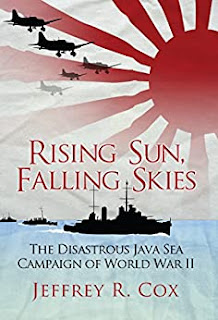 This review has been submitted to the RCAF Journal.
This review has been submitted to the RCAF Journal.
Title: A History of
the Mediterranean Air War 1940-1945 Vol 4: Sicily and Italy to the Fall of Rome
(14 May, 1943 – 5 June, 1944)
Author: Christopher
Shores and Giovanni Massimello
ISBN: 978-1-91162-110-2
Publisher: Grub Street
Year: 2018
Hardcover
Pages: 696
Photos/Maps: Many
hundreds/5
This book represents
the fourth installment of this comprehensive review of the air war in the Mediterranean
theatre of operations. The previous books have provided a phenomenal foundation
for anyone interested in this period of the war. Building upon that base, Vol 4
moves forward the narrative outside of the North African theatre and into the
invasion of Sicily and the Italian mainland. Shores maintains the depth of
detail and vast scope of research that he and his colleagues have brought to
their previous works.
The structure of the
narrative appeals to both the serious historian as well as the casual reader.
The period covered by the book is broken into daily installments. A synopsis of
the events of that day from both the allied and axis perspective is followed by
a detailed breakdown of Allied claims and losses (with as much detail relating
to the event as possible) and a similar synopsis of Axis claims and losses. Additional
detail is provided by further breaking down the claims sections by nationality.
A fascinating element to this kind of side by side presentation of the details
is that the reader can compare claims and casualties by each side and
appreciate the deltas between the claimed kills and the actual losses. It is
indicative of the gradual but inexorable tipping of the balance away from the
Axis air forces that German claims from flak as opposed to aircraft combats
began to assume a more prominent place.
What sets this book,
and the previous books in the series, apart, is the depth of research and
detail undertaken by the authors. It is truly remarkable that, even with loss
of veterans through the passage of time, so much detail and ‘personal’ elements
are still captured. One begins to better appreciate the resilience of the Axis
powers even as they are forced out of mainland Africa, to resist the ever
increasing power of the Allied air forces. Furthermore, the authors include
numerous examples of individual operations that provide a great deal of insight
into the tactics and challenges unique to the Mediterranean theatre of
operations.
The pictures and
narrative also provide a sense of the spirit of the adversaries despite the
pressures of combat and loss. One gets a real understanding of the coping
abilities and the mental strength of the individuals involved in this war.
Also, the African theatre of operations has been described as one of the few ‘Wars
Without Hate’ in WW2. The implication being that, with the absence of
significant collateral damage targets, there was less of a negative emotional component
to the fighting, and a great deal more respect for ones adversaries leading to an
ability to appreciate their company once the fighting was over. Be that as it
may however, one is also left with a sense of the hostility of the environment
within which these forces clashed. A crash caused by combat, mechanical failure
or becoming lost over water or over the desert as often as not led to a slow
and lonely demise. Very rarely were searches ever undertaken.
Some of the more
fascinating aspects of the book include the photo montage and narrative surrounding
the sinking of the Italian battleship Roma by Do217’s of KG100 using the
PX1400X ‘Fritz X’ radio-guided weapons systems. A detailed account by crewmen
of the two aircraft that undertook the strike is included in the book. It makes
for absorbing reading and speaks to the advances in air to ground/sea weapons
systems. The PX1400X is a little known system that was guided remotely via an
onboard camera from its launch aircraft to target. Launched from 7000m, the ‘mothership’
was impervious to anti-aircraft fire. In the case of the Roma, the attackers escaped
without a scratch.
Grub Street publishing
has once again produced a book of the very highest quality. The printing is a
bit small for those of a certain age; however, the layout is clean and clear.
The photos have been reproduced with astonishing clarity. Many of these photos
are very rare or have never been published before. The variety of aircraft
types presented in the book really do emphasize the challenges to the support
elements of the different nations. Overall, this work provides the reader within
outstanding overarching perspective of the air war in the Mediterranean. It is
very strongly recommended for those looking to garner a deeper appreciation of
the Mediterranean theatre.






